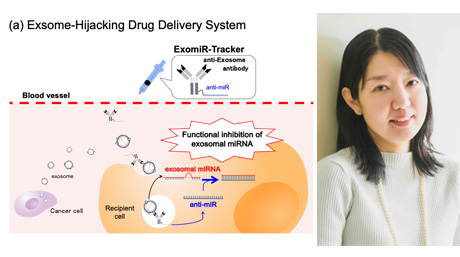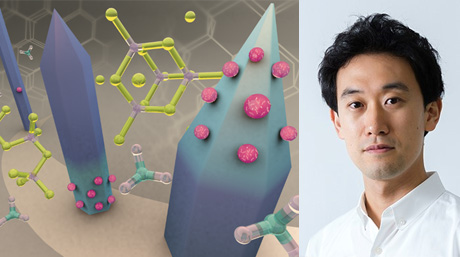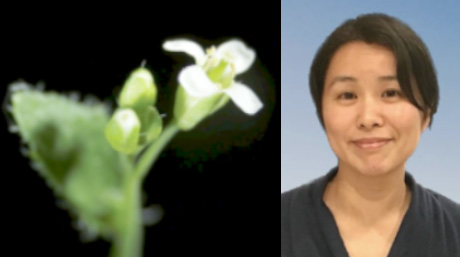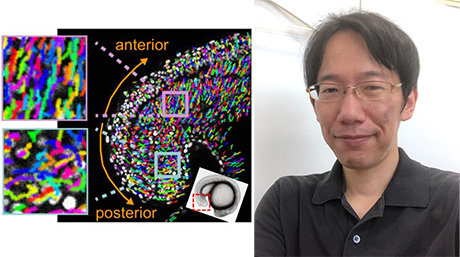Life Science and Technology News
【Labs spotlight】 Fukui Laboratory
Application of great potentials of microbes!
The Department has a variety of laboratories for Life Science and Technology, in which cutting-edge innovative research is being undertaken not only in basic science and engineering but also in the areas of medicine, pharmacy, agriculture, and multidisciplinary sciences.
This "Spotlight" series features a laboratory from the Department and introduces you to the laboratory's research projects and outcomes. This time we focus on Fukui Laboratory.

Areas of Supervision
Primary/Life Science and Technology
Professor Toshiaki Fukui![]()
| Degree | PhD 1994, Kyoto University |
|---|---|
| Areas of Research | Applied microbiology, Metabolic engineering, Extremophiles |
| Keywords | Hyperthermophiles, Bio-based biodegradable plastics, Microbial production |
| Website | Fukui Laboratory |
Research interest
Hyperthermophiles, microbes capable of growing at temperatures higher than 90 ℃, are quite interesting research subjects from various aspects, such as their strategies for thermal adaptation, quite unique metabolic features, phylogenetic positions near to the root, and so on. They have also attracted attentions from industrial points of view as potential resources for highly thermostable enzymes. Our lab is focusing on the hyperthermophilic archaeon Thermococcus kodakaraensis KOD1, which is a producer of the excellent DNA polymerase for PCR amplification. By applying the versatile genetic manipulation system (the first for hyperthermophiles), we are investigating several cellular functions and metabolisms of this archaeon, as well as engineering the metabolic pathways for efficient production of H2 from biomass resources.
Another research topic is microbial synthesis of polyhydroxyalkanoates (PHAs), which are biomass-based biodegradable polymers attracting industrial attentions as possible alternatives to petroleum-based polymeric materials. However unfortunately, the most abundant PHA in nature, poly(3-hydroxybutyrate), is not suitable for general practical applications due to the hard and stiff properties. We are studying on elucidation of physiology and metabolic pathways of PHA-producing bacteria, and conducting genetic engineering, protein engineering, and metabolic engineering of the PHA-producers in order to achieve efficient production of flexible and practical PHA copolyesters from inexpensive carbon sources.

Hyperthermphilic archaeon and Bioplastic-prodicung bacterium
Research findings
Selected publications
Studies on hyperthermophiles
- [1] K. Nohara, I. Orita, S. Nakamura, T. Imanaka, T. Fukui. Genetic examination and mass balance analysis of pyruvate/amino acids oxidation pathways in the hyperthermophilic archaeon Thermococcus kodakarensis. J. Bacteriol., 196:3831-3839 (2014)
- [2] P. Harnvoravongchai, H. Kobori, I. Orita, S. Nakamura, T. Imanaka, T. Fukui. Characterization and gene deletion analysis of four homologues of group 3 pyridine nucleotide disulfide oxidoreductases from Thermococcus kodakarensis. Extremophiles, 18:603-616 (2014)
- [3] T. Awano, A. Wilming, H. Tomita, Y. Yokooji, T. Fukui, T. Imanaka, H. Atomi. Characterization of two members among the five ADP-forming acyl coenzyme A (acyl-CoA) synthetases reveals the presence of a 2-(Imidazol-4-yl)acetyl-CoA synthetase in Thermococcus kodakarensis. J. Bacteriol., 194:140-147 (2014)
- [4] H. Kobori, M. Ogino, I. Orita, S. Nakamura, T. Imanaka, T. Fukui. Characterization of NADH oxidase/NADPH polysulfide oxidoreductase and its unexpected participation in oxygen sensitivity in an anaerobic hyperthermophilic archaeon. J. Bacteriol., 192: 5192-5202 (2010)
- [5] T. Sato, T. Fukui, H. Atomi, T. Imanaka. Improved and versatile transformation system allowing multiple genetic manipulations of the hyperthermophilic archaeon Thermococcus kodakaraensis. Appl. Environ. Microbiol., 71, 3889-3899 (2005)
- [6] T. Fukui, H. Atomi, T. Kanai, R. Matsumi, S. Fujiwara, T. Imanaka. Complete genome sequence of the hyperthermophilic archaeon Thermococcus kodakaraensis KOD1 and comparison with Pyrococcus Genomes. Genome Res., 15, 352-363 (2005)
Studies on microbial synthesis of bioplastics
- [1] C. Insomphun, H. Xie, J. Mifune, Y. Kawashima, I. Orita, S. Nakamura, T. Fukui. Improved artificial pathway for biosynthesis of poly(3-hydroxybutyrate-co-3-hydroxyhexanoate) with high C6-monomer composition from fructose in Ralstonia eutropha. Metab. Eng. 27:38-45 (2015)
- [2] R. Shimizu, Y. Dempo, Y. Nakayama, S. Nakamura, T. Bamba, E. Fukusaki, T. Fukui. New insight into the role of the Calvin cycle: Reutilization of CO2 emitted through sugar degradation. Sci. Rep. 5:11617 (2015)
- [3] I. Orita, K. Nishikawa, S. Nakamura, T. Fukui. Biosynthesis of polyhydroxyalkanoate copolymers from methanol by Methylobacterium extorquens AM1 and the engineered strains under cobalt-deficient conditions. Appl. Microbiol. Biotechnol., 98:3715-3725 (2014)
- [4] T. Fukui, K. Chou, K. Harada, I. Orita, Y. Nakayama, T. Bamba, S. Nakamura, E. Fukusaki. Metabolite profiles of polyhydroxyalkanoate-producing Ralstonia eutropha H16. Metabolomics, 10:190-202 (2014)
- [5] J. Mifune, S. Nakamura, T. Fukui. Engineering of pha operon on Cupriavidus necator chromosome for efficient biosynthesis of poly(3-hydroxybutrate-co-3-hydroxyhexanoate) from vegetable oil. Polym. Deg. Stab., 95, 1305-1312 (2010)
- [6] T. Fukui, M. Suzuki, T. Tsuge, S. Nakamura. Microbial synthesis of poly(3-hydroxybutyrate-co-3-hydroxypropionate) from unrelated carbon sources by engineered Cupriavidus necator. Biomacromolecules, 10, 700-706 (2009)
Contact
Professor Toshiaki Fukui
Room 913, B1 building, Suzukakedai campus
E-mail : tfukui@bio.titech.ac.jp
*Find more about the lab and the latest activities at the lab site![]() . (Japanese)
. (Japanese)
*May 1, 2025:Some of the content has been updated with the latest information.





